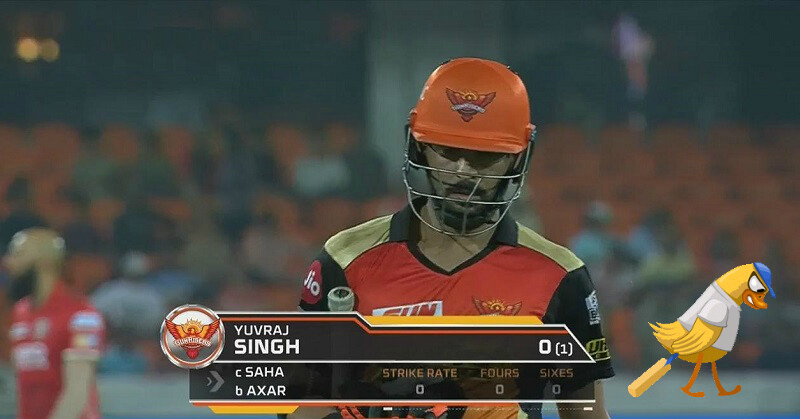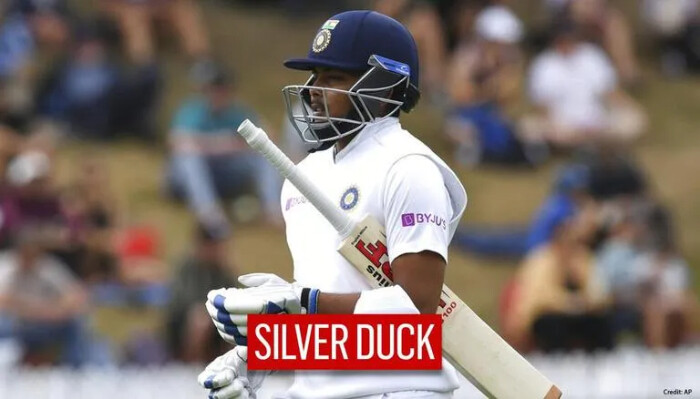Being dismissed on the very first ball of your innings is one of the most devastating moments in cricket. Every batsman throughout cricket history must have believed in the unattainable protection against falling victim to this awful fate. However, cricket’s unpredictable nature sometimes conspires to make this unpleasant conclusion an unavoidable reality.
While going out for a duck is widely despised, it’s worth noting that there are several different forms of this terrible statistic all over the game. These numerous types of ducks in cricket not only add to the trouble of batters but also provide new elements to the experiences of the players and the sport’s history.
What is a Duck in Cricket?
In cricket, the term “duck” refers to an ignominious performance made by a batsman. Simply put, a batsman is regarded to have scored a duck when he or she is removed without scoring a single run. It’s a scenario that may be both embarrassing and disheartening for a player and their team, as it basically indicates they added nothing to the team’s overall score.

These terms add a layer of intrigue to the sport, as they emphasize the importance of a batsman’s role in contributing to the team’s success. They also serve as a testament to the bowler’s skill and strategy in getting the better of their opponent.
What is Total Ducks in Cricket?
Now that we’ve described a duck, let’s look at the idea of “total ducks” in cricket. Total ducks are the total number of ducks scored by a team in a single match or series. This number is critical when measuring a team’s performance and has a substantial impact on the result of a match.
Total ducks are more than just a statistical curiosity, they frequently represent the team’s ability to handle stressful situations as well as the overall form of the batting lineup. Teams with a large number of total ducks may find it hard to post competitive totals, making them vulnerable to defeat.

In addition to analyzing a team’s overall performance, Total Ducks can also throw a light on individual players. Batsmen who frequently score ducks may come under evaluation, and their place in the team may be called into doubt.
In addition, total ducks can serve as a source of guidance for bowlers. Knowing that a bowler has the ability to send a batsman back to the pavilion without scoring may boost a bowler’s confidence and motivation to succeed.
Here are Eight types of Ducks in Cricket:
- Golden Duck: A batsman is considered to have scored a “golden duck” when he or she gets removed on the first ball of their innings without contributing any runs to the scoreboard. It is the most disappointing form of duck since the player barely had time to settle at the crease.
- Silver Duck: A “silver duck” happens when a player is out on the second ball of the innings without scoring. While it’s better than a golden duck, it’s still a poor showing, and the batsman has contributed very little to the team’s total.

- Bronze Duck: A “bronze duck” happens when a batsman is removed without scoring on the third delivery of their innings. This is still seen as a poor performance, reflecting the batsman’s failure to create an impact.
- Diamond Duck: A “diamond duck” is a unique form of duck in which a batsman is dismissed after not facing a single ball. This usually happens when a batsman is run out or dismissed by a wide delivery or a no-ball with no touch with the ball.
- Laughing Duck: A “laughing duck” is a term used for a situation in which a batsman is dismissed without scoring yet the dismissal is considered to be hysterical or amusing in some sense. This could be due to an unusual or amusing style of dismissal, such as a batsman being bowled by a ball that bounced numerous times before hitting the stumps, or going out in an unusual manner.
- Royal Duck: A “royal duck” happens when a batsman is dismissed for a duck in both innings of a First-class match, (Mainly used in Ashes Series). It’s a rare and terrible situation that indicates the batsman’s complete lack of involvement throughout the entire match. In the context of top-level cricket, the term “royal” is often used to stress the significance of this double failure.
- King Pair: A “king pair” scenario occurs when a batsman is out for a golden duck in both innings of a Test match. It’s a rare and unfortunate achievement that indicates the batsman’s lack of involvement during the match.
- A Pair: Similarly to a king pair, “a pair” happens when a batsman is dismissed for any kind of duck in both innings of a First-class match (including Test matches). The term is frequently heard in the context of first-class cricket.
Interesting facts related to “ducks” in cricket:
Most Ducks in Test Cricket:
Courtney Walsh, a former West Indies fast bowler, holds the record for the most ducks in Test cricket, after being dismissed without scoring 43 times in his Test career.
Most Ducks in ODI Cricket:
Sanath Jayasuriya of Sri Lanka owns the record for the most ducks in One-Day Internationals, after being dismissed without scoring 34 times in his ODI career.
Most Ducks in T20I Cricket
Paul Stirling of Ireland has the record for the most ducks in T20 International cricket, with 13 ducks.
From the Vault: Bowler who bowled most consecutive dot balls in cricket history

